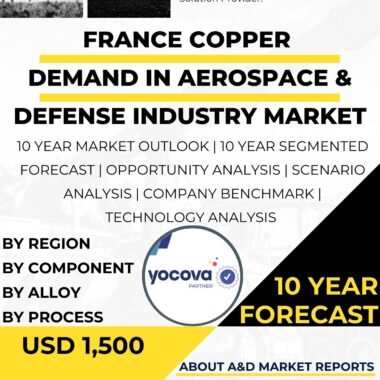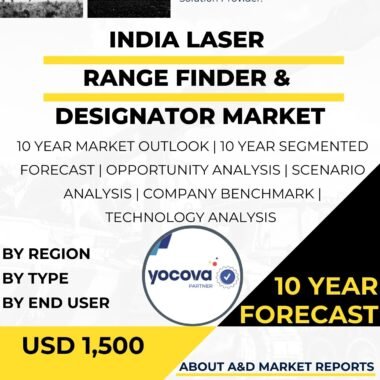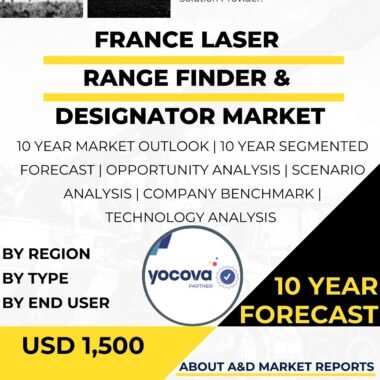Description
The demand for magnesium in the aerospace and defense industry in South Korea is experiencing notable growth, driven by the sector’s increasing need for lightweight, high-strength materials that enhance overall performance and fuel efficiency. Magnesium’s inherent properties, including its lightweight nature, high strength-to-weight ratio, and corrosion resistance, make it especially attractive for aerospace applications where reducing aircraft weight translates into significant operational cost savings and environmental benefits. In South Korea, magnesium is becoming an important material for manufacturing aircraft structural components, engine parts, and interior fittings, reflecting the broader international trend toward advanced lightweight alloys in aviation and defense manufacturing. The aerospace sector?s focus on improving fuel efficiency and meeting stringent safety and performance standards boosts interest in magnesium alloys, which stand as a viable substitute for heavier metals like aluminum and steel.
The growth of magnesium demand in this industry aligns with South Korea’s increasing aerospace manufacturing capabilities and defense spending. The government plays a crucial role by promoting domestic production of magnesium through supportive policies, subsidies, and incentives aimed at reducing import dependence and encouraging sustainable practices. These policies facilitate investments in magnesium extraction, refinement, and alloy development, further supporting the market’s expansion.
In recent years, innovation in magnesium alloy technologies has enhanced their heat resistance, corrosion protection, and mechanical properties, making them more suitable for demanding aerospace environments. This has led to increased adoption of specialized magnesium alloys such as JDM1 and JDM2, known for superior properties tailored for aircraft and military applications. The defense sector in South Korea, including fighter jets, helicopters, drones, and missile systems, increasingly integrates magnesium alloys to achieve lighter weight without compromising structural integrity. These materials offer advantageous machinability and vibration damping, which are critical for performance and safety in military technology and aerospace equipment.
Despite its promising attributes, the magnesium market in South Korea faces challenges that impact its growth prospects. Production costs for magnesium and its alloys remain relatively high due to energy-intensive extraction and processing methods. Fluctuations in global magnesium prices and limited availability of raw magnesium resources create supply uncertainty, which can hamper consistent scaling of production. Additionally, magnesium?s susceptibility to corrosion, particularly in humid environments, requires advanced protective coatings or alloying with rare earth elements, adding to overall costs. Fire risks during manufacturing processes further necessitate stringent handling protocols and robust R&D efforts to develop safer, more durable magnesium materials.
The South Korean magnesium market also contends with environmental and sustainability concerns. Mining and processing magnesium have environmental impacts that prompt regulatory oversight and investment in eco-friendly production technologies. The government encourages recycling and efficient resource utilization to minimize environmental footprints while sustaining supply for critical industrial demands. These factors contribute to an industry trend toward more sustainable magnesium production practices that align with global clean energy and climate goals.
In South Korea, the aerospace and defense industry’s increasing use of magnesium not only supports domestic market growth but also positions the country as a competitive player in global aerospace manufacturing. As international airlines and defense organizations seek improved materials for enhanced aircraft performance and reduced emissions, South Korean companies focusing on magnesium alloys stand to benefit from both commercial and military market opportunities. Continued advancements in additive manufacturing, such as 3D printing of magnesium components, open new possibilities for complex, lightweight aerospace part production at competitive costs.
Overall, the magnesium demand in South Korea?s aerospace and defense sector is underpinned by the alloy’s strategic advantages in weight reduction and performance enhancement, coupled with government support and ongoing material innovations. While challenges related to cost, supply, and environmental impact exist, the emphasis on fuel efficiency, military modernization, and sustainable production ensures a robust future outlook. South Korea?s magnesium market is expected to grow moderately, contributing significantly to advancements in aerospace and defense technologies domestically and on the global stage. The increasing integration of magnesium alloys in new aircraft designs and defense platforms marks a clear trajectory toward more extensive utilization of this critical lightweight metal in the years ahead.




